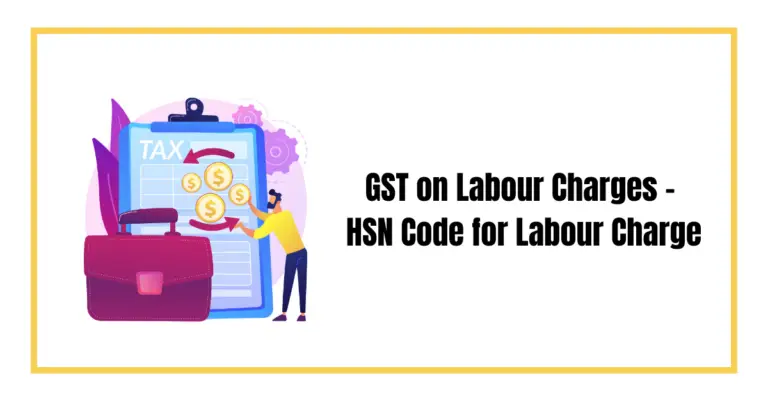There has been a lot of confusion between an income tax and GST since the government introduced the new tax system. It is important to understand the crucial differences between ITR and GST filing.
Taxes are classified into two major categories, i.e., direct taxes, and indirect taxes. Direct tax is imposed on your income, while indirect taxes are levied on people buying goods and using services. The GST comes under an indirect tax, while the Income tax is a direct tax. Go through this article to better understand taxes, ITR filing, and GST return filing.
Direct and Indirect Tax
Taxes are imposed on the citizens and corporations of a country by the government every year. The government requires you to pay taxes every year. The collection of taxes is backed by the country’s laws and upheld by various organizations. Every country has a different system for taxing its citizens. The main reason for taxing people is to have enough money to improve the country’s condition.
Direct taxes are paid by the taxpayer and are non-transferable. They are paid directly by an individual to the government and are only paid after the taxpayer receives the income. On the other hand, indirect taxes are transferable, and the responsibility can be given to others. An indirect tax paid by the person recovers it through another person. It is ultimately the consumer that bears indirect taxes. The consumers pay them before it even reaches the taxpayers. The tax collection for indirect taxes is much easier than the collection of direct taxes. The GST (the goods and services tax) and VAT (the Value Added Tax) are indirect taxes, while income tax is a direct tax.
Some examples of direct tax
1. Income tax:
Imposed on individuals that fall under a particular tax bracket and paid directly to the government.
2. Corporate tax:
Imposed on companies and corporations by the government.
3. Estate duty:
Levied on an individual if they have inherited something.
4. Fringe benefits tax:
Imposed by the state government on an employer that gives fringe benefits to his employees.
5. Wealth tax:
Levied on an individual who owns the property.
6. Gift tax:
A person who has received a taxable gift has to pay gift tax to the government.
Some examples of indirect tax:
1. GST:
The GST registration portal is levied on goods purchased and services provided.
2. Sales tax:
Service tax is paid by shopkeepers but ultimately shifted to the consumers by levying charges on the goods.
3. Excise duty:
Paid by the manufacturer of the goods but eventually shifted to the wholesalers and retailers.
4. Entertainment tax:
Paid by the cinema owners but shifted to the consumers of media.
5. Custom duty:
Tax levied on goods imported from other nations. It is paid for by the consumers.
6. Service tax:
Paid by individuals that avail certain services such as a food bill in a restaurant.
GST
GST was introduced in India by the government to eliminate all the cascading and complicated tax systems in place before, which made it difficult to collect taxes. The GST is levied on goods and services. Due to the introduction of GST, service tax, value-added tax, excise duty, etc., was made obsolete. It is an indirect tax imposed on the supply chain of certain goods and services.
Income tax
Income tax is exclusively paid by an individual who earns more than 2.5 lakhs per year. The IT Department predetermines the tax slabs and the tax they are required to pay. The highest amount of income tax an individual can pay is around 30% of their salary. It is mandatory to pay income tax, and the responsibility cannot be shifted to anyone else.
Major differences between Income tax and GST
| Income tax | GST |
| Income tax is imposed upon an individual and the income he made in a year. | As the name suggests, GST is the tax imposed on goods and services. |
| You are only required to pay income tax if your annual income is more than 2.5 lakhs. | You need to register for and pay GST if your annual turnover reaches more than 40 lakhs. |
| It is a direct tax collected by the government. | It is an indirect tax collected by the government. |
| The individual itself must pay income tax. If they earn more than 2.5 lakhs per year, they must pay income tax to the government directly as they can’t shift it to someone else. | GST is ultimately paid by the consumer even if they are not paying the government directly. The tax is shifted onto the consumer eventually. |
| The government has imposed income tax on a person’s annual salary, income from capital gain, house property, etc. | The government has imposed GST on buying goods and availing of services provided only. |
| Only the taxpayers themselves are supposed to pay the income tax to the government. | However, GST is paid by all country citizens as it has wide coverage. |
| You cannot transfer it to anyone else. | You can transfer GST to someone else. |
| It is a direct tax with only one stage. The income tax is directly proportional to the amount of money a person earns in a year. The higher their annual salary, the more income tax they must pay. | It is a multistage and comprehensive destination-based tax since it has replaced various indirect taxes such as additional customs duty, value-added duty, service duty, Central excise duty, etc. |
Conclusion
The government has implemented several laws on its citizens that requires them to pay taxes in the right amount and at the right time. The major difference between income tax and GST is that income tax is a direct tax while GST: https://www.gst.gov.in/ is an indirect tax. Both types of taxes are crucial to the government to improve the country’s infrastructure and other purposes. Income tax is only paid if you are in a certain salary bracket, while everyone pays GST through purchasing goods and using services.










